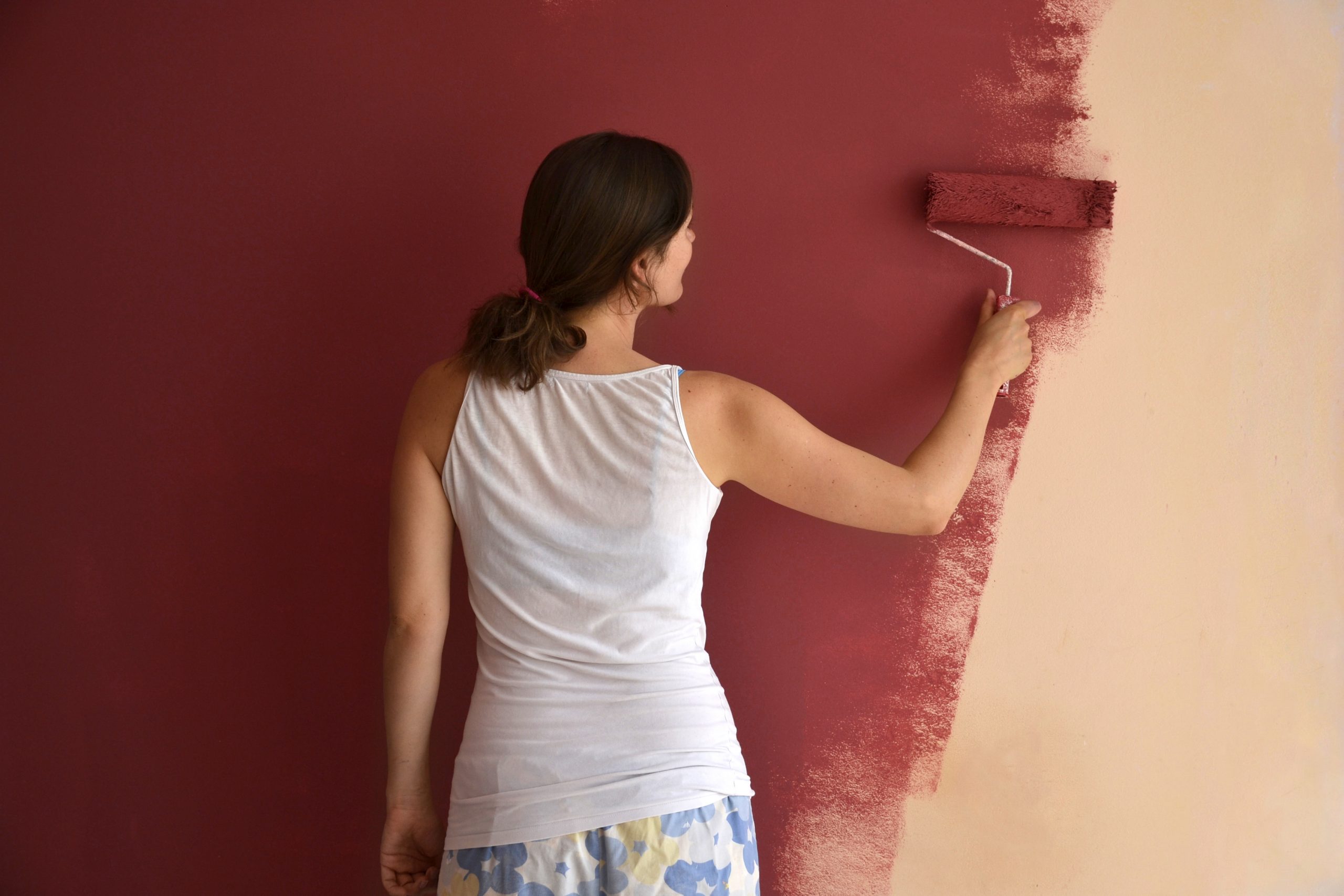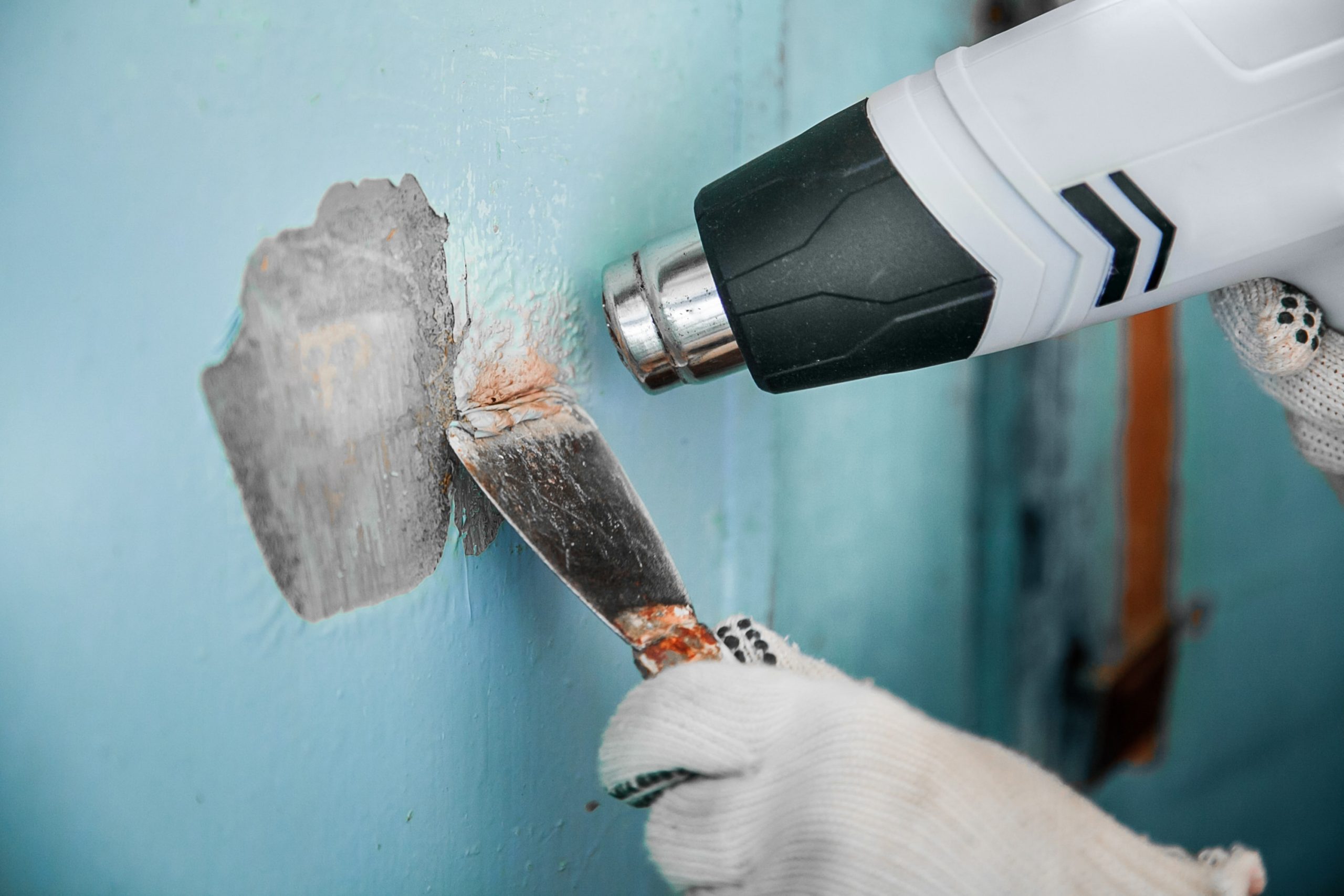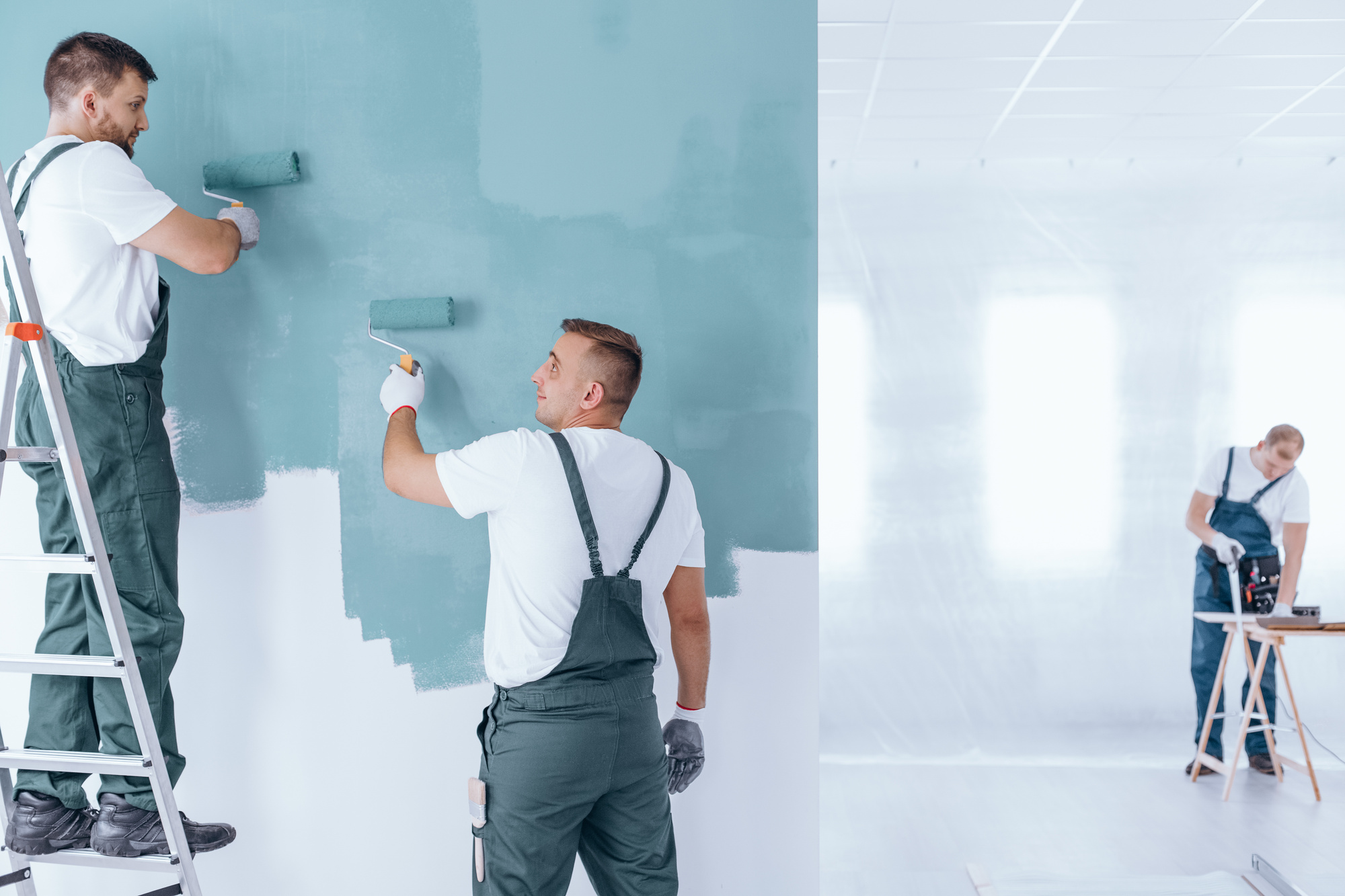-
Commercial Painting and Painters
As much as DIY painting is cheap and fun, the truth is that the whole thing can be risky and unpredictable especially if it’s commercial painting. It’s wiser and safer to hire a professional painter. An expert will save you time, money and will also advise you accordingly. This article contains the knowledge needed in commercial painting.
What is Commercial Painting?
Commercial painting the kind of painting job that is done on larger plates like hospitals, restaurants, office buildings and business stores. They are usually done by commercial painters. This means that you will have to hire professionals for commercial painting. Commercial painters do the following things. They do;
- Exterior painting
- Interior painting
- Power washing
- Drywall painting
- Decorative painting
- Masonry restoration etc
How to Know if You Need Commercial Painting and Painters for Your Project
It is normal to have doubts about the type of painting you want for your property. Go for commercial painting is your property falls among the following properties;
- Apartment buildings
- Banks
- Restaurants
- Office buildings
- Hotels and motels
- Malls and boutiques
- Schools and hospitals
- Cafe and coffee shops
Just like stated earlier at the beginning of this article if your project is a large scale then commercial painting and hiring a professional painter will be the best decision to make.

Types of Commercial Painting Paints
There are different types of commercial paints. These paints depend on the property that you are coming on. For example, the type of paint that a painter will use in a restaurant is not the same as the one used in an office building. Below are some tips to help you have an idea of the type of paint you might want to use.
- For machinery, find a paint that has a good quality of urethane. It has good adherence and lasts longer
- For ceilings, go for acrylic paint
- For business, properties go for a paint with a fresh coat
- Waterborne acrylic paint is perfect for parking lots
- Rust Proof paints are good for painting surfaces that rust easily
Why Hire a Professional Painter for Commercial Painting
DIY is usually a good move in terms of affordability. Painting is cheaper if you do it yourself compared to hiring a professional painter. However, commercial painting is vastly complicated and time-consuming.
To be on the safer side it advisable to hire an expert in commercial painting to do the work for you. Professional painters have thick knowledge of different types of paints. They are the best guys that have ideas on the type of paint that might suit the job. Professional painters save you money and time. They also guarantee quality work and this in return puts your mind at ease.
Today finding a good painter for commercial painting can be hectic and frustrating. There are a lot of painters who are out for money and luck integrity. Below are tips to help you locate good and reliable commercial painters.
How to Identify a Good Painter for Commercial painting
The best way to find out if a painter is qualified for commercial painting jobs will be checking for the certificates.
A serious painter is a licenced painter. Painters who have no certificates to back up their skills are likely to disappoint in delivery. Certified painters display seriousness and efficiency in their work. And if anything, no one wants to suffer from economic blows resulting from working with unlicensed painters.
Conclusion
The size of the project doesn’t matter, what matters is the final appearance especially in commercial painting. It is always wiser to hire professional painters for commercial painting.
-
Some of the Procedure Towards Apartment Painting
Apartment painting depends on how far you are willing to go and have an impressive painted apartment. These will be determined by how much money, time and effort you want to put in. You can decide to do it yourself or hire a specialist in painting. Apartment painting can be challenging but with the following procedure, you can achieve it.
Source for the Right Supplies for Apartment Painting
First and foremost you should know the measurements for your walls and ceiling, this will help you as you plan to source for supplies. Look for the right paints which are mostly recommended.
Choose the correct brushes that you are sure can do the job properly. Remember cheap is expensive.
Here is a list of some of the painting tools you will be able to get at the paint store.
- Nine-inch paint pan
- A plastic tray liner (for a different colour change)
- Nap roller covers and a sturdy nine-inch roller handle
- Two and a half-inch paintbrush
- Fibreglass mesh tape
- Plastic drop cover for furniture
- A step ladder
- Gloves
With the above tools for apartment painting ready then the remaining part is to protect your belongings. These can be done by moving the furniture far away from walls and have the plastic drop cloths to cover them.
Remember apartment painting is more of science than art and the following factors should be considered.
Clean the Apartment Before Apartment Painting
The walls of the apartment can be washed with water under high pressure and left for some time. This will allow dust particles to absorb water and make it easy to remove when you wash it with water again and under high pressure. This kind of procedure saves time as compared to scrapping.

Prepare the Surface in Apartment Painting
This will involve the repair of cracks, holes and damaged walls. Apply spackle to treat the damaged areas by spreading it gently as you give it time to dry.
Priming in Apartment Painting
The surface should be smooth and stable. This can be done by applying a primer coat before the actual paint. A primer acts as a preparatory coat and can increase the life of paint over it.
Have the Correct Paint for Your Apartment Painting
In apartment painting, it is advised to invest in quality over quantity because this will be profitable to you in the long run. Also, know about weather conditions in your locality. It is said acrylic emulsion can withstand different climate conditions.
The Best Painting Tools for Apartment Painting
Everyone wants to have a smooth painted surface, this can be achieved by using the right tools. These tools come in different styles and techniques depending on brushing, rolling and spraying. Don’t use high power sprayers as they sometimes leave gaps and also over-spray.
With a large surface, the use of a roller is recommended as it covers a large area. When all the tools are used according to their specified job they save time and the output result is excellent.
Conclusion
Once the apartment painting job is done. Take a survey of the walls and I identify places where there’s too much paint. Finish your painting job by aligning those affected areas professionally.
-
Painting Tips and Techniques to Help you DIY the Interior like a Pro Painter
Painting is fun and exciting to do especially if you do it yourself. DIY creates a huge platform on which you can experiment and even use different techniques that you have seen somewhere or create your own. This article comprises different techniques and tips that will help you and other painters to DIY the interior and still make it appear as work done by an expert.
1. Painters Use the Polka Dot Painting Technique for Kids Rooms
One advantage of DIY is that you can never be stuck on ideas, especially if you are painting. As a painter, you have to think out of the box. Polka Dot is a very beautiful technique to use while painting. It is a good idea for painting the interior of your kid’s room.
Polka dots are very easy to apply, all that a painter needs good paint and tolls and let your imagination lead you.
2. Painters can Improvise: Use a Sponge to Paint
The first question that pops up in someone’s mind when he or she hears the word sponge painting technique is how does it work? For the sponge painting technique, a painter needs a sponge roller or just sponge the way it is to apply paint on a surface.
Using the sponge technique is very simple that you can even involve the whole family to participate. There are no skills or expertise required. All that you have to bring on board is your imagination.
3. A Painter is Resourceful: Do a Research on Streak Painting Technique
Also known as Striè on French, this technique is a beautiful and unique idea that any painter should try. It involves painting the interior to achieve a distinct look that compares with that of a linen material.
It is a very simple technique that can match any decent layout. All you need are proper tools and paint to help you come up with horizontal and vertical layers on the surface that you are working on.

4. A Painter Can Never Go Wrong with Stripes
Stripes on the walls are beautiful. It doesn’t matter if the formation is horizontal or vertical. Because vertical stripes make the room appear taller. Horizontal stripes make the room look wider.
In other terms, this technique is perfect for painters that have an objective to make smaller rooms appear big. The technique is vast and timeless too. You can decide to use thin or wide stripes. This will add more character and warmth in the room.
5. Painters like Experimenting: Try The Metallic painting Technique
Something beautiful with this type of technique is that there are so many different ways you can use metallic paint. A painter can decide to paint the whole room metallic, or just select a few sections to work on.
6. Stencils
The use of stencils is another technique a painter can bring on board to paint the interior. In the market, stencils come in varieties. All you have to do is choose the type that you find interesting and beautiful to paint with. Stencils can make an abandoned and boring washroom appear more attractive and modern.
Up to You Now
Know what you want to achieve, find the direct tools, choose the paint to dive into it there are no limits for DIY painters. This article was contributed by: Website- Concrete Pumping Auckland
-
A Quick Peek on Concrete Stripping
A paint stripper is a chemical product which is mainly designed to extract paint.
It also removes coatings and finishes while at the same time cleaning the surface. Paint stripping is the best way of manually removing numerous coatings of paint without damaging the surface. This can be done by either sanding, scraping and priming before repainting. The following are some of the paint strippers available in the market. Remember some are toxic and require safety precautions.
Different Types Strippers in Paint stripping
Paint strippers are categorised according to their properties and uniqueness in removing specific finishes.
- Solvent strippers
- Caustic strippers
- Biochemical strippers
- Zero-VOC strippers
Solvent Strippers in Paint Stripping
Solvent strippers as said to be the most versatile. This is because they rely on chemicals that separate the bond between paint and surface. They are highly effective in paint stripping of water and oil-based paints, masonry, metal surfaces, polyurethane and epoxy from wood.
Some of them have methylene chloride, this has a high level of volatile organic compounds and some with methanol and toluene which have a health hazard.
This fumes when inhaled can cause brain damage and also damage the reproductive system.
Solvent strippers take less than 15 mins on the surface and a scrapper can then be used to remove the paint. Wash the surface with water before repainting.
Always take proper precaution in handling them.

Caustic Strippers in Paint Stripping
Caustic strippers require active ingredients like sodium hydroxide which can convert dry paint into soap which loosens from the surface. This paint stripping is mostly preferred in removing oil-based paints on the masonry surface like concrete or similar ( Ref Concreting Auckland )
Caustic strippers tend to erode aluminium and blacken hardwoods as maples. When caustic strippers are applied they take less than 30 mins before the paint can be scraped.
Caustic strippers are alkaline therefore the striped surface needs to be wiped with water and vinegar solution. Although caustic strippers are considered to have a lower VOC than solvent strippers, it is advised to take precaution as they can cause eye irritation, skin and lungs when touched or inhaled.
Biochemical Strippers in Paint Stripping
Biochemical strippers are arrived at after a combination of plant-based solvents like terpenes and the organic compound N-methyl-2-pyrrolidone (NMP).
Just like caustic and solvent strippers, they can remove oil-based paints from masonry, wood and metal but are proven to be ineffective in removing epoxy and polyurethane coatings. In paint stripping, biochemical is applied and left for almost four hours before the paint can be scraped off.
With biochemicals, there’s no need to neutralise the striped surface, just wash with water and spirit before repainting.
Zero-VOC Strippers in Paint Stripping
These strippers are made without methylene chloride, lye or NMP. They are made with naturally occurring solvents which cracks resin of water and oil-based paint. This reaction with the help of benzyl alcohol results in the paint to loosen from metal and masonry.
This type of paint stripping is known to be the safest of them all although direct exposure may lead to lungs irritation and skin infection. Take precaution in the handling of a zero-VOC stripper.
Conclusion
Stripper application should be done mostly outdoor or in a well-ventilated place. Let the surface dry completely before repainting.




